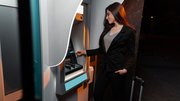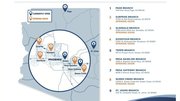News
Banks on branch bandwagon
December 29, 2004
With large financial institutions like Bank of America announcing plans for hundreds of new branches in the next few years and mainstream publications like USA Today taking note, the message seems to be "the branch is back."
Actually, it never went away.
Data from the Federal Deposit Insurance Corp. indicates that the number of U.S. bank branches grew 29 percent in the past decade.
|
In addition to adding new branches, financial institutions are expected to step up their investments in existing ones. According to a Celent Communications report, spending on branch technology may grow to $4.4 billion by 2006.
In with the new
The renewed emphasis on branches, both old and new, marks a return to banks' retail roots, said Peter Kulik, product manager, Fifth Third Processing Solutions. "Banks are building more business on fee income rather than interest. Most new accounts are opened at branches, so a branch presence helps them open accounts," he said.
Noting that no bank has a truly nationwide presence, Anjalee Davis, an analyst in Celent's Banking Group, said that a few banks - most notably Bank of America - are making bids to establish a national footprint. To claim a national presence, it's particularly important for banks to be in populous, high-profile areas such as New York and Chicago, two of the cities targeted by Bank of America.
Before the recent economic downturn, many banks entered new markets through acquisitions. According to Silva, during the downturn, some banks opted to build new branches because the economy didn't favor affordable deals. With the renewed economy, banks use both forms of expansion.
An advantage to building branches rather than acquiring them is the ability to establish a more consistent technology strategy. It's often tough for banks to integrate the disparate technical systems gained in acquisitions, Davis said.
The ATM effect
So what will this mean for ATMs?
"As branch expansion goes, so goes ATM sales," said Tony Hayes, director of Dove Consulting's Financial Services group.
Some banks are experimenting with branches where ATMs are used for simple services and tellers for more complex transactions. A particularly interesting example of this approach, Davis said, is BofA's Express branches, which allow customers to choose from ATMs, online stations or the telephone to conduct their transactions - with bank employees on hand to direct customers and answer questions about the different options.
While branches offer the best opportunity for cross-selling, Kulik said that ATMs are also a logical channel for sales because of their high transaction volumes.
"Because you have so many transactions, ATMs can be a profitable channel for banks even with a very low take rate."

















